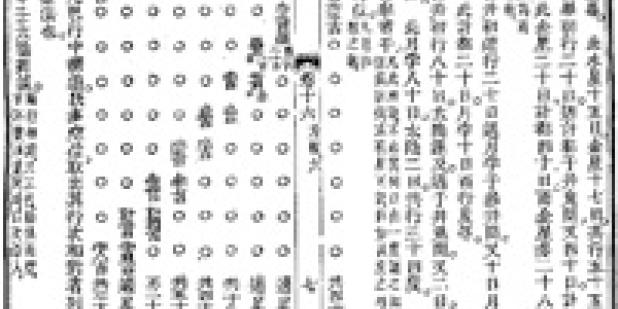Happy Lunar New Year from the USC US-China Institute!
The Chinese Roots of Linear Algebra
Roger Hart from the University of Texas at Austin will speak on Chinese roots of linear algebra at Princeton.
Where

In China, from about the first century C.E. through the seventeenth century, anonymous and most likely illiterate adepts practiced an arcane art termed fangcheng ?? (often translated into English as “rectangular arrays”). This art provided procedures for manipulating counting rods on a counting board, which enabled practitioners to produce answers to seemingly insoluble riddles. This art seems to have been closely aligned with other mathematical arts, including various forms of calculation, numerology, and possibly divination. While we know virtually nothing about these practitioners, records of their practices have been preserved: these practices were occasionally recorded by aspiring literati and incorporated in texts they compiled on mathematical arts, which were then presented to the imperial court, together with prefaces claiming that these mathematical arts were essential to ordering the empire. In their prefaces and commentaries, these literati sometimes assigned credit to mysterious recluses, apparently to support the claimed exclusivity and authenticity of their compilation; yet at other times the literati compilers also denounced fangcheng practitioners for overly arcane techniques, apparently in an attempt to reassert their own higher status and authority. Over this period of perhaps sixteen centuries, bibliographies of imperial libraries record the titles of hundreds of treatises on the mathematical arts (suan fa ??). Many of these are still extant, and many include fangcheng problems.
Fangcheng, an art which apparently found no practical application beyond solving implausible riddles, is remarkable for several reasons: it is essentially equivalent to the solution of systems of N equations in N unknowns in modern linear algebra; the earliest recorded fangcheng procedure is in many ways quite similar to what we now call Gaussian elimination; finally, there is a reasonable possibility that these procedures were transmitted to Europe and Japan, serving perhaps as precursors of modern matrices, Gaussian elimination, and determinants.
Featured Articles
We note the passing of many prominent individuals who played some role in U.S.-China affairs, whether in politics, economics or in helping people in one place understand the other.
Events
Ying Zhu looks at new developments for Chinese and global streaming services.
David Zweig examines China's talent recruitment efforts, particularly towards those scientists and engineers who left China for further study. U.S. universities, labs and companies have long brought in talent from China. Are such people still welcome?






